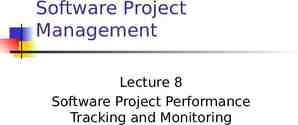Accreditation of Nurse Residency and Fellowship Programs Benjamin
42 Slides1.02 MB

Accreditation of Nurse Residency and Fellowship Programs Benjamin Murray, MPA

Disclosure: I have no relevant financial relationships with a commercial interest. I will not be discussing off-label or investigative use of drugs.

Objectives Identify the benefits of having an accredited Transition to Practice Program (TTP). Describe the CCNE standards for TTP programs. Describe the process for obtaining accreditation from CCNE for a TTP program

Historical Overview of CCNE Activities

Historical Overview of CCNE Residency Activities 1995: The American Association of Colleges of Nursing (AACN) Task Force on Accreditation was established. 1996: CCNE was established by the AACN membership. 1998: CCNE held its first meeting of its Board of Commissioners, and on-site evaluations of baccalaureate and master’s degree programs were first conducted. 2004-2007: The CCNE Task Force on Nurse Residency Program Accreditation drafted the standards for residency program accreditation. 2008: CCNE began accrediting Doctor of Nursing Practice programs and post-baccalaureate nurse residency programs. 2014-2015: The CCNE Standards Committee for Nurse Residency Programs proposed revisions to the residency program accreditation standards, and these revisions were adopted by the CCNE Board in Summer 2015. The new standards went into effect July 1, 2016.

Historical Overview of CCNE Residency Activities 2014: CCNE began accrediting post-graduate APRN certificate programs. 2014-2015: The CCNE Standards Committee for Nurse Residency Programs proposed revisions to the residency program accreditation standards, and these revisions were adopted by the CCNE Board in Summer 2015. The new standards went into effect July 1, 2016. 2016-2017: CCNE task force studies APRN residency/fellowship programs and the need for related accreditation. 2018-2019: NP Residency/Fellowship Standards Committee drafts accreditation standards for NP residency/fellowship programs, paving the way for CCNE to begin accrediting such programs in 2020. 2020: CCNE convenes its Entry-to-Practice Nurse Residency Program Standards Committee to review and propose revisions to the entry-topractice residency program accreditation standards.

CCNE Scope of Accreditation CCNE’s scope of accreditation for entry-to-practice nurse residency programs includes: All entry-to-practice nurse residency programs (including those serving ADN-prepared residents) Nurse residency programs in all care settings Both employee-based nurse residency programs and federally funded traineeship nurse residency programs (separately accredited) Employee-based nurse residency programs hire newly licensed nurses as permanent employees of the healthcare organization. Federally funded traineeship nurse residency programs engage newly licensed nurses for the duration of the residency program without a commitment for continued employment.

Foundational Documents for Entry-to-Practice Nurse Residency Programs Standards for Accreditation of Entry-to-Practice Nurse Residency Programs (2015) Available at http://www.aacnnursing.org/Portals/42/CCNE/PDF/CCNE-Entry-to-Practic e-Residency-Standards-2015.pdf . Procedures for Accreditation of Entry-to-Practice Nurse Residency Programs (2017) Available at http://www.aacnnursing.org/Portals/42/CCNE/PDF/Procedures-Residency .pdf .

Foundational Documents for NP Residency/Fellowship Programs Proposed Standards for Accreditation of Nurse Practitioner Residency/Fellowship Programs It is expected that these standards will be finalized in mid 2020. Available at https://www.aacnnursing.org/Portals/42/CCNE/PDF/NP-Residency-Stand ards-Draft.pdf . Procedures to guide the accreditation of NP residency/fellowship programs will be developed in 2020.

Steps in the Accreditation Process

Application for Accreditation To begin the accreditation process, the chief nursing officer and chief executive officer submit an application. The application includes a description of the healthcare organization setting and of the residency program, provides evidence that the healthcare organization and the academic partner are accredited, and provides an overview of the curriculum. Following a staff review of the application, CCNE may contact the program with follow-up questions. Upon “acceptance” of the application, the program has two years to host an on-site evaluation.

Self-Study The program is required to conduct a self-study related to program quality and effectiveness. The process of self-analysis should result in the preparation of an analytical document that addresses all CCNE accreditation standards and key elements. The self-study document provides a solid understanding of how the program operates, and identifies strengths and areas in need of improvement. The self-study document is used by the evaluation team, Residency Accreditation Committee (RAC), and Board of Commissioners in their review and deliberations.

On-Site Evaluation The program selects the dates of the evaluation, which typically occurs over a 2.5- to 3-day period. The on-site evaluation is conducted to: assess the program’s compliance with the CCNE standards and key elements; validate the findings and conclusions of the self-study document; collect information to be used by the RAC and Board to assess compliance with the standards; and review the process that the program representatives have established to ensure continued self-improvement.

Team Report The team report is an objective assessment of how well the program meets the standards and complies with the key elements. The report is based upon the team’s: analysis of institutional documents and other materials provided by the program; analysis of information garnered during confidential interviews with program constituents; and observation of learning activities. The team makes a written determination about whether the program has met or not met each standard and whether there are any compliance concerns with the key elements. Even if there is a compliance concern for a key element, the overall standard may still be met.

Team Report The team does not form a recommendation regarding the accreditation of the program. Several weeks following the on-site evaluation, the chief nursing officer is provided the team report. The chief nursing officer has the option to submit a response to the team report. The response may: offer corrections of errors as they relate to names, positions, data, and other documentable facts; offer comments that agree or disagree with the opinions and conclusions stated in the report; and provide any documentation demonstrating additional progress made toward ongoing program improvement.

Residency Accreditation Committee The RAC is provided copies of the self-study document, the team report, and the institutional response for consideration at its next meeting. Generally, it is not necessary for the chief nursing officer to participate in the RAC meeting; however, program representatives may meet with the RAC if desired. The RAC reviews all materials carefully and formulates a confidential recommendation regarding a proposed action to be taken by the Board. The proposed accreditation action includes: accreditation status and period of accreditation; identification of any areas where there are compliance concerns with the standards and/or key elements; and a schedule for progress reports or other reports to be submitted.

Board of Commissioners The Board considers the proposed accreditation action recommended by the RAC. In addition, the Board reviews the self-study document, the team report, and the institutional response. The Board may accept the recommendation of the RAC or choose to take an alternative action that it believes to be appropriate.

Board of Commissioners – Final Action Accreditation granted The Board grants accreditation for a period extending up to 5 years. Accreditation denied (for programs seeking initial accreditation) The Board denies accreditation based on failure to demonstrate the ability to meet the accreditation standards. Accreditation withdrawn (for programs pursuing continued accreditation) The Board withdraws accreditation based on failure to demonstrate the ability to meet the accreditation standards. Before an action of the Board to deny or withdraw accreditation is made public, the institution is afforded the opportunity to pursue the CCNE appeals process.

Board of Commissioners – Final Action If the program hosts an on-site evaluation in the fall, then the Board makes its decision the following spring. If the program hosts an on-site evaluation in the winter/spring, then the Board makes it decision the following fall. Programs are notified of the accreditation action within 30 days of the Board meeting. The effective date of the accreditation is the first day of the on-site evaluation.

Standards for Accreditation of Entry-to-Practice Nurse Residency Programs

Standards for Accreditation of Entry-to-Practice Nurse Residency Programs Four Standards, 40 Key Elements Standard I: 9 Key Elements Standard II: 11 Key Elements Standard III: 11 Key Elements III-A: 6 Key Elements III-B: 5 Key Elements Standard IV: 9 Key Elements Examples of Evidence Glossary

Standard I: Program Quality: Program Delivery The healthcare organization and academic nursing program(s) implement the entry-to-practice nurse residency program in a manner that ensures a successful transition to practice for residents. The healthcare organization and academic nursing program(s) provide qualified educators/faculty to enable the entry-to-practice nurse residency program to achieve its mission, goals, and expected outcomes. The program educators/faculty are qualified and foster the achievement of the mission, goals, and expected program outcomes.

Standard II: Program Quality: Institutional Commitment and Resources The healthcare organization, in partnership with the academic nursing program(s), demonstrates ongoing commitment and support for the entry-to-practice nurse residency program. The healthcare organization demonstrates commitment, through its policies and practices, to educational progression for those residents not prepared with a baccalaureate or graduate degree in nursing. Program educators/faculty, appropriate facilities, fiscal commitment, and teaching-learning support services are available to enable the program to achieve its mission, goals, and expected outcomes. There is a sufficient number of program educators/faculty to foster the achievement of the mission, goals, and expected program outcomes. There is fiscal commitment from the healthcare organization to enable residents to fully participate in the program

Standard III: Program Quality: Curriculum The entry-to-practice nurse residency program curriculum is centered on management and delivery of quality patient care and professional role and leadership. Care delivery focuses on quality and safety, patient and family centered care, management of patient care delivery, management of the changing patient condition, communication and conflict management, and informatics and technology. Professional role and leadership focus on professional development, performance improvement, evidence-based practice (for baccalaureate and MEPN residents), ethical decision making, stress management, and the business of healthcare.

Standard III: Program Quality: Curriculum III-A. MANAGEMENT AND DELIVERY OF QUALITY PATIENT CARE Care delivery is demonstrated by the planning, implementation, and coordination of care of the patient, family, or others significant to the patient. Residents have the skills to safely deliver and manage patient care for quality patient outcomes. Residents are responsible for evaluating patient care outcomes, including exercising critical thinking, and using evidence to analyze the effects of care. Residents evaluate the causes of error and the institution’s approach to dealing with errors. Residents understand the institution’s quality improvement process and participate in quality improvement efforts. Residents are sensitive to and respect patients and families, including their values and health practices. Care delivery encompasses prioritizing care as well as the appropriate delegation to and supervision of specific care functions by other members of the interprofessional team. Language and communication are major components of the provision of safe patient care. Effective use of informatics and technology are essential to the provision of quality patient care.

Standard III: Program Quality: Curriculum III-B. PROFESSIONAL ROLE AND LEADERSHIP Leadership, an essential professional nursing role function, is demonstrated through professional identity and practice accountability. The program should develop residents’ ability to lead change to advance health. Residents are to commit to planning and developing their careers, including the possibility of obtaining professional certification and pursuing formal education. As professionals, residents are committed to life-long learning, to performance improvement, and to maintaining an evidence-based practice. Residents recognize that clinical decision making reflects ethics and values, as well as science and technology. Residents recognize and deal with personal stress levels in order to effectively manage situational stress. The business of healthcare is an important concept for residents to understand and incorporate into their practice.

Standard IV: Program Effectiveness: Assessment and Achievement of Program Outcomes The entry-to-practice nurse residency program is effective in fulfilling its mission and goals as evidenced by achieving its expected program outcomes. Evaluation data demonstrate program effectiveness. Data on program effectiveness are used to foster ongoing program improvement

Proposed Standards for Accreditation of NP Residency/Fellowship Programs

STANDARDS DEVELOPMENT PROCESS The Standards Committee used the following as points of reference to begin its work: Standards for Accreditation of Entry-to-Practice Nurse Residency Programs (CCNE, 2015) Common Advanced Practice Registered Nurse Doctoral-Level Competencies (AACN, 2017) “Toward a Common Taxonomy of Competency Domains for the Health Professions and Competencies for Physicians” (Englander et al, Academic Medicine, 2013) 29

Proposed Standards for Accreditation of NP Residency/Fellowship Programs Four Standards, 41 Key Elements* Standard I: 13 Key Elements Standard II: 11 Key Elements Standard III: 8 Key Elements Standard IV: 9 Key Elements Examples of Evidence Glossary *As work continues to refine the standards, the number of key elements may change.

Standard I: Program Quality: Mission and Foundation (DRAFT) The sponsoring organization(s), supported through an academicpractice partnership, implement(s) the nurse practitioner residency/fellowship program in a manner that assures a successful transition to or within advanced nursing practice. The mission, goals, and expected program outcomes are congruent with those of the sponsoring organization(s) and consistent with the NPs’ scope of practice. The organization(s) provide(s) qualified educators/faculty to enable the nurse practitioner residency/fellowship program to achieve its mission, goals, and expected outcomes. The program educators/faculty are qualified and foster the achievement of the mission, goals, and expected program outcomes.

Standard II: Program Quality: Institutional Commitment and Resources (DRAFT) The sponsoring organization(s), supported through a nursing academic-practice partnership, demonstrates ongoing commitment and support for the nurse practitioner residency/fellowship program. Program educators/faculty, appropriate facilities, fiscal commitment, and teaching-learning support services are available to enable the program to achieve its mission, goals, and expected outcomes. There is a sufficient number of program educators/faculty and mentors to foster the achievement of the mission, goals, and expected program outcomes. There is fiscal commitment from the healthcare organization to enable participants to fully engage in the program.

Standard III: Program Quality: Curriculum (DRAFT) The program curriculum builds upon the participants’ graduate education (i.e. role and population focus) and is designed to enhance proficiency in competencies within eight domains of competence for the health professions2,3. Curricular content is designed to build upon common advanced practice competencies, introduce and/or refine NPspecific knowledge and skills, and transition the NP to practice in the designated population/specialty. Englander, R., Cameron, T., Ballard, A.J., Dodge, J., Bull, J. and Aschenbrener, C.A. (2013). Toward a Common Taxonomy of Competency Domains for the Health Professions and Competencies for Physicians. Academic Medicine, 88(8), 1088-1094. 2 Common Advanced Practice Registered Nurse Doctoral-Level Competencies. American Association of Colleges of Nursing. 2017. Retrieved September 26, 2019, from http://www.aacnnursing.org/Portals/42/AcademicNursing/pdf/CommonAPRN-Doctoral-Competencies.pdf. 3

Standard IV: Program Effectiveness: Assessment and Achievement of Program Outcomes (DRAFT) The NP residency/fellowship program is effective in fulfilling its mission and goals as evidenced by achieving its expected program outcomes. Evaluation data demonstrate program effectiveness. Actual levels of achievement, when compared to expected levels of achievement, demonstrate that the program, overall, is effective in achieving its outcomes. Analysis of data on program effectiveness is used to foster ongoing program improvement.

Accreditation Resources for Entryto-Practice Nurse Residency Programs

Informational Flyer CCNE ACCREDITATION: THE RIGHT CHOICE FOR YOUR NURSE RESIDENCY PROGRAM Available at https://www.aacnnursing.org/Portals/42/CCNE/PDF/CCNE-The-Right-Choi ce.pdf . This informational flyer provides a succinct overview, including information about Magnet alignment, useful for introducing decision makers to the CCNE accreditation process.

NRP Accreditation Video NURSE RESIDENCY PROGRAMS – CCNE ACCREDITATION Available at https://www.youtube.com/watch?v Z-7FNBO41To. Nurse residency program leaders discuss the value of CCNE accreditation. Learn about the accreditation journey and how it stimulates improvements in program quality and recognizes institutional effectiveness.

Standard IV-Program Effectiveness Webinar EVALUATING EFFECTIVENESS IN NURSE RESIDENCY PROGRAMS Available at http://www.aacnnursing.org/Professional-Development/Webinar-Info/ses sionaltcd/WF16 10 12 . Program development and implementation is not complete until an evaluation process has been incorporated. Drawing on the Commission on Collegiate Nursing Education (CCNE) Standards for Accreditation of Entry-to-Practice Nurse Residency Programs (2015), this webinar will explore the rationale for assessing program outcomes, identify the main components of program evaluation, and provide tips for drawing on existing resources to develop and sustain an effective program evaluation process.

Accreditation Application Overview Available at https://www.aacnnursing.org/CCNE-Accreditation/Resources-for/Residen cy-Administrators/Nurse-Residency-Programs-Application-Process . This site describes the application package submitted when initiating the accreditation process. In addition, it provides links to other CCNE resources, including the accreditation fee structure.

Accreditation Workshop for Entry-to-Practice Nurse Residency Programs June 9-10, 2020 This workshop, held in Washington, DC, provides an in-depth review of the accreditation standards and guidance on preparing for the selfstudy process and on-site evaluation. Intended audience: Program administrators at sites seeking initial accreditation New program administrators at currently accredited programs Program administrators at sites approaching renewal of accreditation To receive information about the workshop, email [email protected].

Resources for NP Residency/Fellowship Programs Similar resources are being developed for NP Residency/Fellowship Programs.

Benjamin Murray, Deputy Executive Director [email protected] 202-887-6791 x275 655 K Street NW SUITE 750 WASHINGTON DC 20001 CCNEACCREDITATION.ORG






